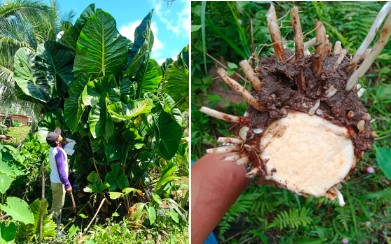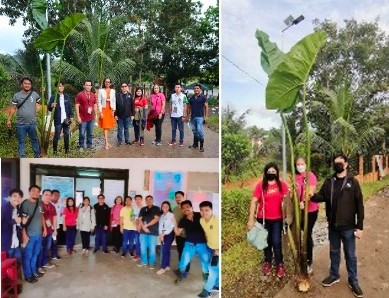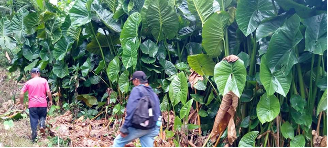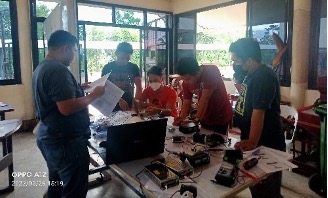 Initial findings of two ongoing Giant Swamp Taro (GST) projects show GST’s potential as source of supplemental food in Agusan del Sur.
Initial findings of two ongoing Giant Swamp Taro (GST) projects show GST’s potential as source of supplemental food in Agusan del Sur.
According to Agusan del Sur State College of Agriculture and Technology (ASSCAT), GST is processed as flour or starch used for making chips for snacks, baby food, and other food products. With its abundance not only in Agusan del Sur but throughout the Philippines, the GST can be an alternative or supplemental food source, which can contribute in achieving food security in the country.
Moreover ASSCAT noted that locations of communities with existing GST, processing plants, and produced GST end-products should be discovered and be known to investors and researchers. Fresh GST corms, also called the “crisis food,” should be processed into dried GST chips for further processing into bakery products because they are highly perishable a few days after harvest.
 These observations led the Philippine Council for Agriculture, Aquatic and Natural Resources Research and Development of the Department of Science and Technology (DOST-PCAARRD) to support the projects, "Development and Use of a GIS-based System for Giant Swamp Taro Production, Processing and Utilization in Agusan Del Sur" and "Development of Giant Swamp Taro (Cyrtosperma chamissonis) Chipping Machine.” Both are implemented by ASSCAT in Agusan del Sur. The project leaders reported the projects’ status during the field monitoring visit to the sites.
These observations led the Philippine Council for Agriculture, Aquatic and Natural Resources Research and Development of the Department of Science and Technology (DOST-PCAARRD) to support the projects, "Development and Use of a GIS-based System for Giant Swamp Taro Production, Processing and Utilization in Agusan Del Sur" and "Development of Giant Swamp Taro (Cyrtosperma chamissonis) Chipping Machine.” Both are implemented by ASSCAT in Agusan del Sur. The project leaders reported the projects’ status during the field monitoring visit to the sites.
The project, “Development and Use of a GIS-based System for Giant Swamp Taro Production, Processing and Utilization in Agusan del Sur” aims to determine the magnitude of GST communities in Agusan del Sur in terms of vegetation volume compared with its corresponding utilization. The output will also aid in strategizing the GST production within the province.
 According to its project leader and Assistant Professor II Engr. Manuel T. Tabada, Jr., the project team already surveyed a total of 12 out of 14 municipalities in Agusan del Sur. He added that they have already conducted three webinars regarding supply and demand, research-writeshop, and basic geographic information system (GIS) mapping and GST characterization.
According to its project leader and Assistant Professor II Engr. Manuel T. Tabada, Jr., the project team already surveyed a total of 12 out of 14 municipalities in Agusan del Sur. He added that they have already conducted three webinars regarding supply and demand, research-writeshop, and basic geographic information system (GIS) mapping and GST characterization.
Meanwhile, the project, “Development of Giant Swamp Taro (Cyrtosperma chamissonis) Chipping Machine” will aim to extend GST’s shelf life and maximize its utilization through the design and development of a GST chipper.

According to its project leader and Center Chief and Research Coordinator Engr. Stephen John DLC. Gonzales, programming and testing of electronic materials are ongoing. They have already conducted five training courses regarding machine design processes, patent search, fabrication processes of the prototype design, supply and demand, and research-writeshop.
The projects are expected to benefit the GST farmers, entrepreneurs, local bakers, and household growers in terms of food business-related endeavors.
